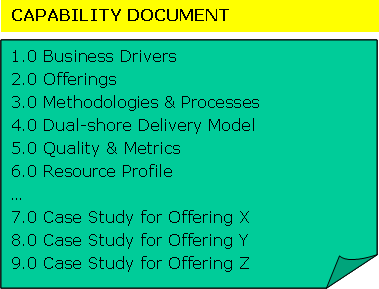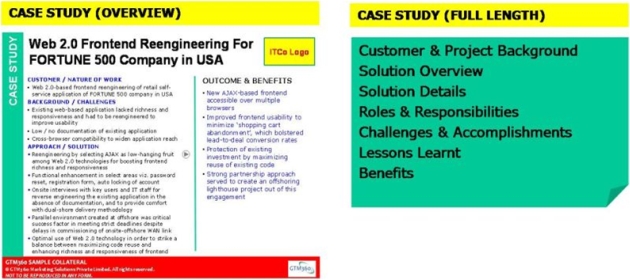All business development teams understand the importance of case studies in B2B technology sales.
But, when it comes to producing and using them, we’ve come across two diametrically opposite approaches followed in many IT companies:
- Kool-Aid: Use case studies for everything
- Phobia: Shun case studies altogether
Case Study Kool-Aid
Vendors in the first category launch into case studies at the drop of a hat.
Prospect asks, “what can you do for us?”, they hand out a case study. Prospect wants to know, “how is your solution future-proof?”, out comes a case study. So on and so forth.
In short, these vendors use case studies as their only marketing collateral. This approach often fails.
Why?

Because, by definition, a case study is a description of “what we have done”.
That is, it looks at the past.
A prospect looking for a solution today wants to know how their technology partner can support their needs tomorrow. They won’t be satisfied with just hearing what the vendor did yesterday.
Therefore, even the most well-written case study of the best project executed in the past won’t convey what the vendor can do in future. That’s why a case study won’t cut it.
What the vendor needs are Marketable Items, Product Roadmap, Capability Document, Offering Detail Presentation, and other future-facing content. You can find a sample of such content here.
As you can see from the following exhibit, different stages of the sales funnel need different types of content.

Once they’ve established their capability via forward-looking marketing collateral, vendors can use case studies to buttress their credentials. It’s okay if their case studies don’t mirror their exact offering. Neither will their competitors’. No one can have five years experience in a one year old technology, if you get my drift.
Case Study Phobia
Moving on to the second category, some companies hold themselves back from developing case studies for any number of reasons ranging from NDA and solution is not yet live through to customer is non-referenceable.
Almost always, we’ve been able to work around these restrictions and help these B2B tech vendors create compelling case studies. Specifics vary from case to case but our approach is grounded on the following truism:
“Speaking about someone in a positive light does not violate the terms of not speaking about someone at all” (Source: Flash Boys by Michael Lewis).
In short, case studies can be effective but they need to be supplemented with other types of forward-looking content mentioned above.
